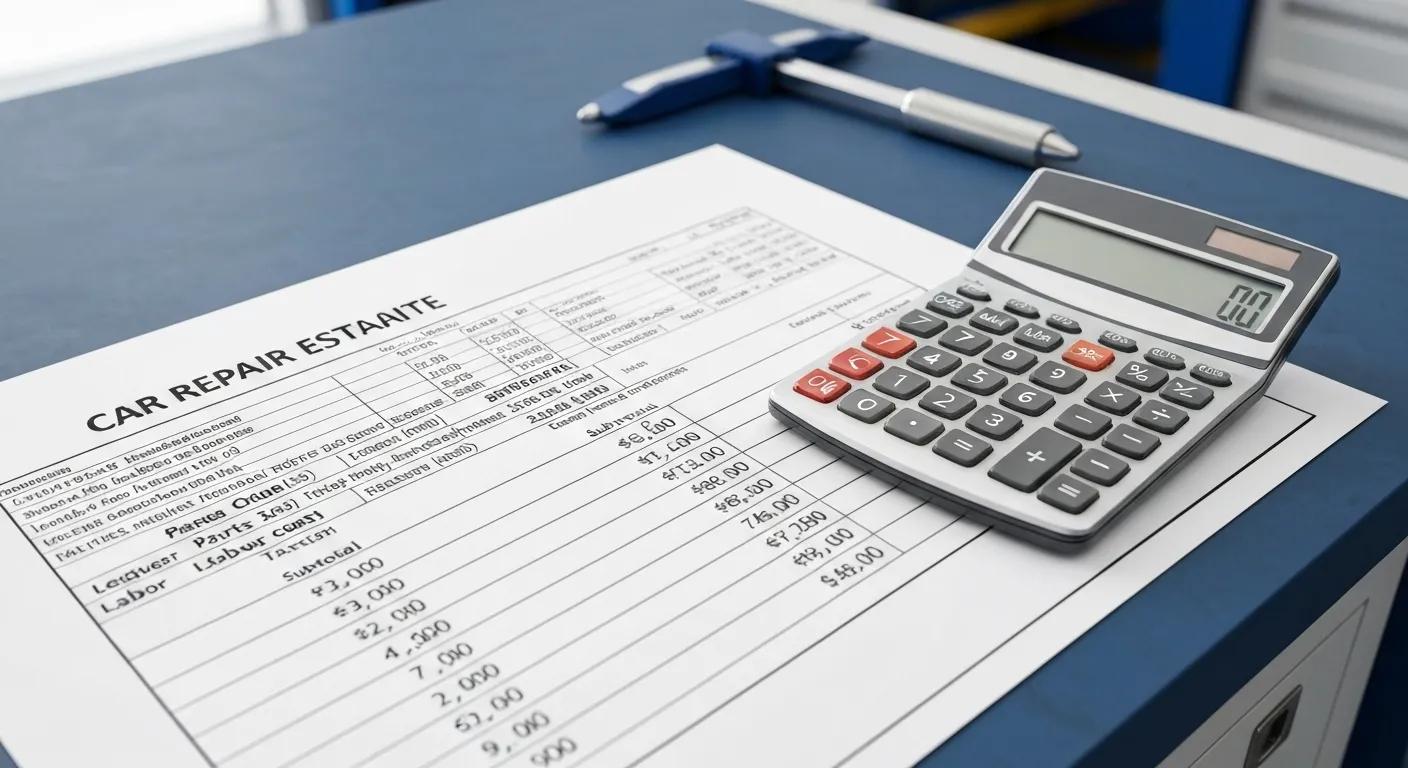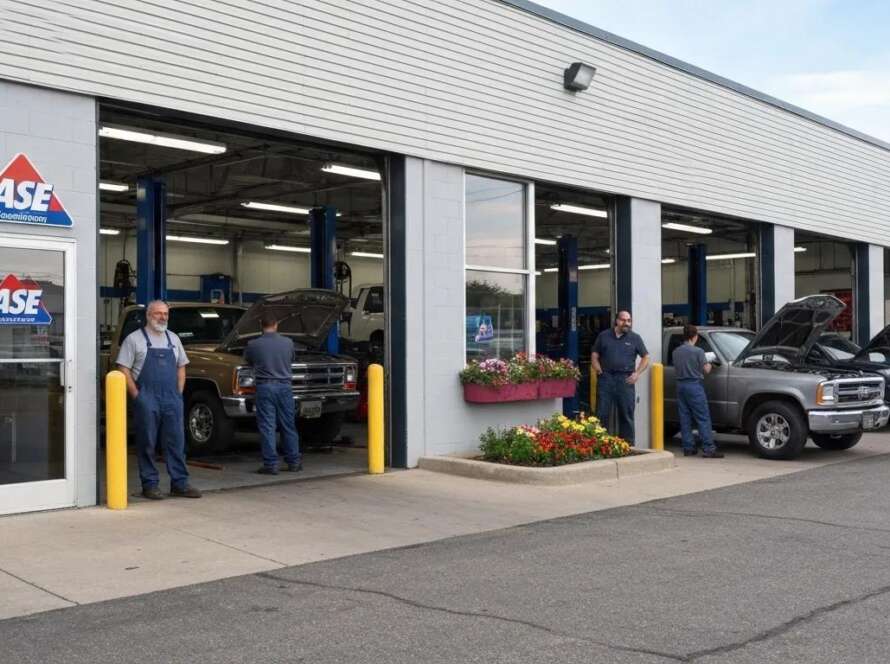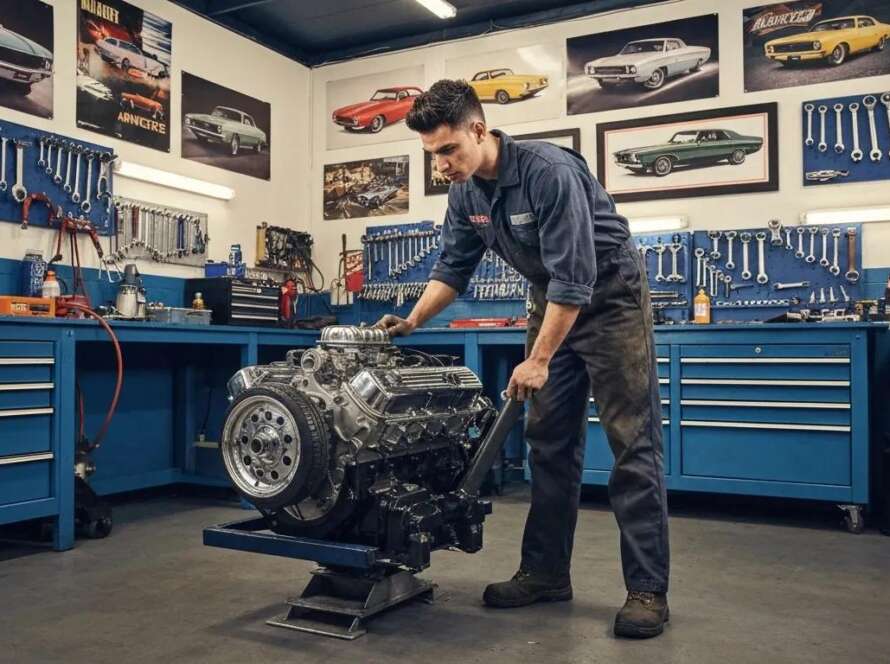
What Should I Do If My Car Diagnosis Is More Expensive Than Expected? How to Navigate Unexpected Car Repair Costs and Make Informed Decisions
Introduction
Facing a repair estimate that far exceeds your budget can derail your financial plans and leave you uncertain about next steps. This guide on how to navigate unexpected car repair costs and make informed decisions explains how to decode estimates, secure second opinions, negotiate pricing, explore financing options, build an emergency fund, avoid common scams, and weigh repair vs. replacement. You will learn to interpret every line item on a repair estimate, confirm diagnostic accuracy, reduce expenses, and choose the optimal path for your vehicle—and your wallet.
How Can I Understand and Decode My Car Repair Estimate?

Decoding a car repair estimate involves analyzing its breakdown of parts cost, labor rates, and diagnostic fees to reveal where expenses arise. A clear estimate definition shows you what you owe, the reason each fee exists, and an example: a $200 diagnostic fee might cover electronic scanning and hands-on inspection. This transparency empowers you to challenge unreasonable charges and plan next steps confidently, setting up the decision to seek further validation.
What Components Are Included in a Typical Car Repair Estimate?
A repair estimate usually itemizes parts, labor, diagnostics, taxes, and shop fees so you know exactly what you’re paying for.
| Component | Description | Typical Range |
|---|---|---|
| Parts | Replacement items like filters or belts | $20–$500 |
| Labor | Technician hourly rate multiplied by hours | $75–$150 per hour |
| Diagnostics | Electronic scanning and manual checks | $80–$200 |
| Shop Fees | Environmental, disposal, shop supplies | $10–$50 |
| Taxes & Materials | Sales tax and consumables | Variable |
Understanding Car Repair Estimates
Car repair estimates break down costs into parts, labor, diagnostics, taxes, and shop fees, allowing consumers to understand where their money is going. This transparency helps in identifying potential overcharges and making informed decisions about repairs [1].
Consumer Reports, “Understanding Your Car Repair Bill” (2022)
This source provides a framework for understanding the components of a car repair estimate, which directly supports the article’s section on decoding such estimates.
Why Are Some Car Repair Estimates Higher Than Expected?
Estimates spike when complex mechanical issues, rare replacement parts, or elevated shop labor rates drive up service costs. Complex repairs require specialized tools and expertise, rare parts have limited suppliers, and premium shop rates reflect high overhead or brand reputation. Recognizing these drivers helps you anticipate cost drivers and decide whether to negotiate or seek alternatives.
How Can I Identify Red Flags in a Repair Estimate?
Spotting warning signs like vague descriptions, inflated labor hours, or unnecessary part replacements protects you from overcharging.
- Unspecified labor entries without hours or rate explanations.
- Parts listed generically (e.g., “miscellaneous hardware”) without OEM details.
- Repeat charges for fees already included elsewhere.
- Diagnostic fees repeated after initial inspection.
- Unverified markup percentages on parts (over 30% above wholesale).
When and How Should I Get a Second Opinion on My Car Repair Diagnosis?
Yes, obtaining a second opinion can validate your current diagnosis, uncover alternate solutions, and potentially save hundreds of dollars. When a quote exceeds expectations or the diagnosis seems unclear, a fresh perspective from another qualified mechanic confirms the necessity of repairs and may reveal less costly fixes.
What Are the Benefits of Seeking a Second Opinion?
- Confirms the original findings to prevent wasted expenses.
- Offers alternative repair methods that may cost less.
- Helps compare labor rates and part sources.
- Builds confidence in the recommended service plan.
How Do I Request a Second Opinion from Another Mechanic?
- Contact a reputable shop and state you’d like a diagnostic review.
- Share the original repair estimate and parts list.
- Schedule an appointment for a full inspection.
- Ask for a written breakdown of their findings.
What Information Should I Provide for an Accurate Second Opinion?
- Original repair estimate with line-item costs.
- Diagnostic reports or code scans from the first shop.
- Vehicle maintenance records showing recent services.
- Photos of damaged components if available.
What Strategies Can I Use to Reduce Unexpected Car Repair Costs?
Reducing repair costs combines effective negotiation, smart parts sourcing, and simple DIY tasks to lower your overall expense. By combining these tactics, you maintain vehicle performance while protecting your budget.
How Can I Negotiate My Car Repair Estimate Effectively?

- Ask for lower labor rates or reduced diagnostic fees.
- Compare estimates from multiple shops and request a match.
- Offer to pay in cash for a discount on the final bill.
- Request that the shop applies existing warranties or recalls.
Negotiating Repair Costs
Negotiating with auto repair shops can lead to significant savings, with potential reductions of 10-20% on the final bill. Strategies include asking for lower labor rates, comparing estimates, and inquiring about discounts for cash payments [2].
National Institute for Automotive Service Excellence (ASE), “Negotiating Your Auto Repair Bill” (2023)
This citation supports the article’s advice on negotiating repair costs, offering practical tips for consumers to reduce expenses.
Should I Consider Providing My Own Parts or Using Aftermarket Alternatives?
| Source | Feature | Consideration |
|---|---|---|
| OEM Parts | Manufacturer-approved fit and finish | Higher cost, full warranty |
| Aftermarket | Lower price, wider availability | Variable quality, limited warranty |
| Salvaged Parts | Deep discounts on used components | Uncertain lifespan, no warranty |
Selecting the right parts source can save up to 40% on part costs and paves the way for safe DIY repairs.
What DIY Repairs Are Safe and Cost-Effective?
- Replace engine air and cabin air filters.
- Install new spark plugs and ignition coils.
- Change engine oil and oil filter.
- Swap out worn brake pads and rotors.
What Financing Options Are Available for Unexpected Auto Repairs?
Exploring financing options helps you cover urgent repairs without depleting your savings, ensuring you maintain mobility while preserving financial stability.
How Do Personal Loans Compare to Credit Cards for Car Repair Financing?
| Option | Interest Rate | Term |
|---|---|---|
| Personal Loan | 6–15% fixed | 1–5 years |
| Credit Card | 15–25% variable | Revolving, minimum payment |
What Payment Plans Do Auto Repair Shops Commonly Offer?
- In-house financing with fixed monthly installments.
- Deferred payment plans with no interest if paid within a set term.
- Third-party services offering quick credit approvals.
How Can I Choose the Best Financing Option for My Situation?
- Compare APRs and fees between lenders.
- Evaluate monthly payment amounts against your budget.
- Check eligibility requirements and approval speed.
- Consider promotional offers and penalty terms.
How Can I Build and Use an Emergency Car Repair Fund?
An emergency car repair fund provides peace of mind by covering sudden expenses and preventing debt accumulation. Establishing clear savings goals and strategies builds financial resilience for future repairs.
What Steps Should I Take to Start an Emergency Car Repair Fund?
- Set a target fund equal to two full repair estimates.
- Automate weekly or monthly transfers into a separate account.
- Track progress and adjust contributions after each repair.
- Maintain the fund exclusively for vehicle emergencies.
How Much Should I Budget for Unexpected Car Repairs?
| Repair Type | Average Cost | Recommended Fund |
|---|---|---|
| Brake system service | $300 | $600 |
| Transmission repair | $1,200 | $2,400 |
| Electrical diagnostics | $200 | $400 |
| Routine maintenance | $150 | $300 |
How Does Regular Vehicle Maintenance Help Prevent Unexpected Costs?
- Replace engine oil and filter every 5,000 miles.
- Inspect and replace timing belts or serpentine belts.
- Rotate and balance tires every 6,000 miles.
- Flush brake fluid and coolant per manufacturer schedule.
How Can I Identify and Avoid Common Car Repair Scams?
Recognizing deceptive practices and choosing a reputable shop safeguards you from inflated bills, unnecessary services, and poor workmanship.
What Are the Most Common Mechanic Scams and Red Flags?
- Recommendation of full engine overhaul for minor issues.
- Quoting excessive labor hours without inspection.
- Swapping good parts for old ones and claiming replacements.
- Charging premium rates for generic consumables.
- Pressuring you to authorize work without a written estimate.
How Do I Find a Trustworthy and Reputable Auto Repair Shop?
- Verify ASE or manufacturer certifications.
- Check online ratings and customer testimonials.
- Request itemized estimates in writing.
- Tour the shop to assess organization and equipment.
- Ask for warranty terms on parts and labor.
What Are My Consumer Rights When Facing Disputes Over Repairs?
- Right to an itemized written estimate before work begins.
- Right to approve additional repairs above an agreed cost.
- Right to revoke authorization within a cooling-off period.
- Right to file complaints with state consumer protection offices.
- Right to dispute charges through small-claims court if necessary.
How Do I Decide Whether to Repair or Replace My Vehicle After a Costly Diagnosis?
Repairing or replacing your car hinges on factors like vehicle age, market value, and recurring issues to determine the financial “tipping point.” We’ll outline a decision framework that balances cost, safety, and long-term value.
What Factors Should I Consider When Choosing to Repair or Replace?
- Vehicle age and total mileage.
- Current market trade-in or resale value.
- Frequency and cost of past repairs.
- Safety and reliability requirements.
- Emotional or logistical importance of the vehicle.
How Do I Calculate the Financial “Tipping Point” for Repair vs. Replacement?
Determining when repair costs exceed vehicle value requires comparing total projected repairs to current market value. For example, if your car’s trade-in value is $3,000 and anticipated repairs over two years total $3,500, replacing the car is financially prudent.
What Role Do Extended Warranties and Mechanical Breakdown Insurance Play in This Decision?
- Powertrain coverage protects engine, transmission, and drivetrain.
- Bumper-to-bumper plans cover most mechanical and electrical components.
- MBI policies often include roadside assistance and rental reimbursement.
- Warranty duration and mileage limits determine total protection.
Repairing a high-cost diagnosis demands a strategic approach that balances transparency, validation, and financial planning. By decoding estimates, securing second opinions, negotiating costs, exploring credit solutions, and building a dedicated repair fund, you gain control over unexpected expenses. Proactive maintenance and scam awareness further protect your investment, while a clear decision framework ensures you choose the most cost-effective path—repairing when it makes sense or replacing when it doesn’t. Trust this roadmap to guide you through any surprising repair bill with confidence and clarity.
References
[1] Consumer Reports, “Understanding Your Car Repair Bill” (2022)
[2] National Institute for Automotive Service Excellence (ASE), “Negotiating Your Auto Repair Bill” (2023)




